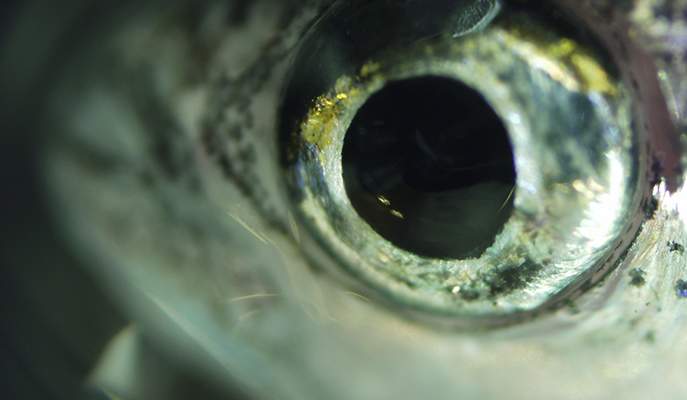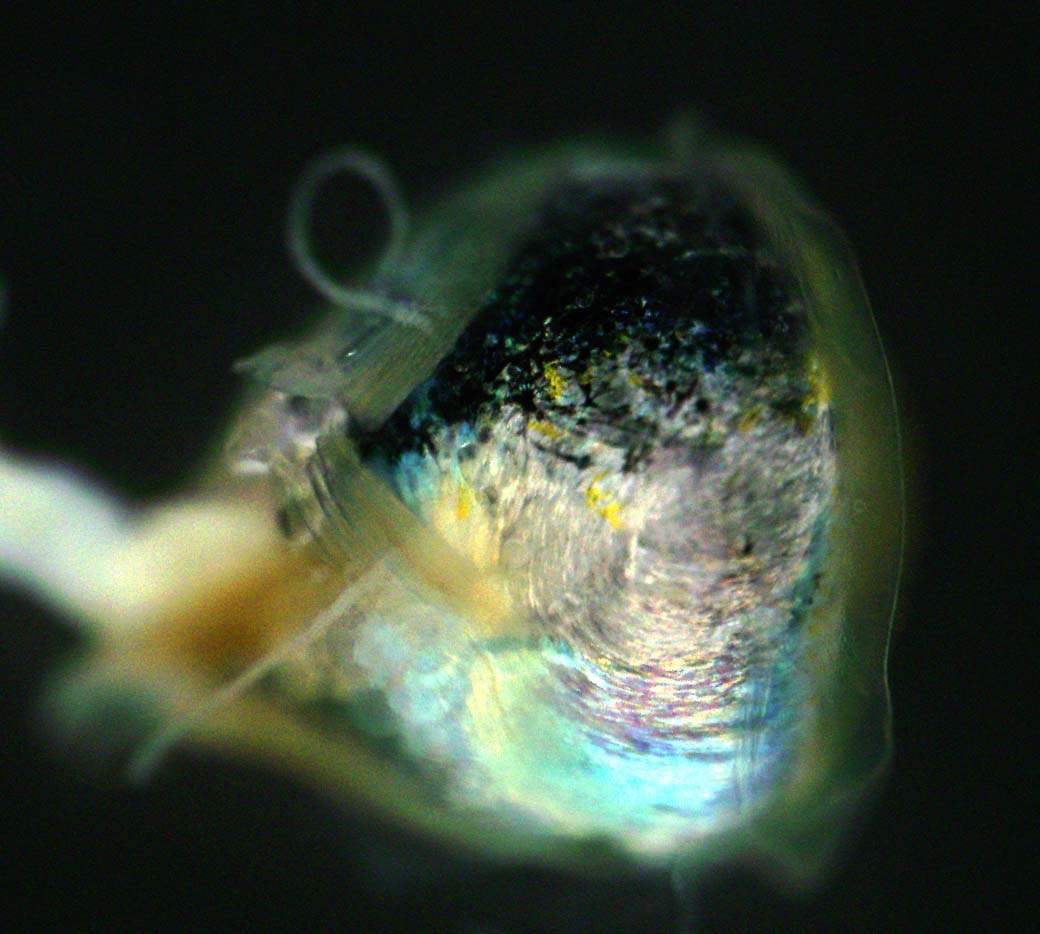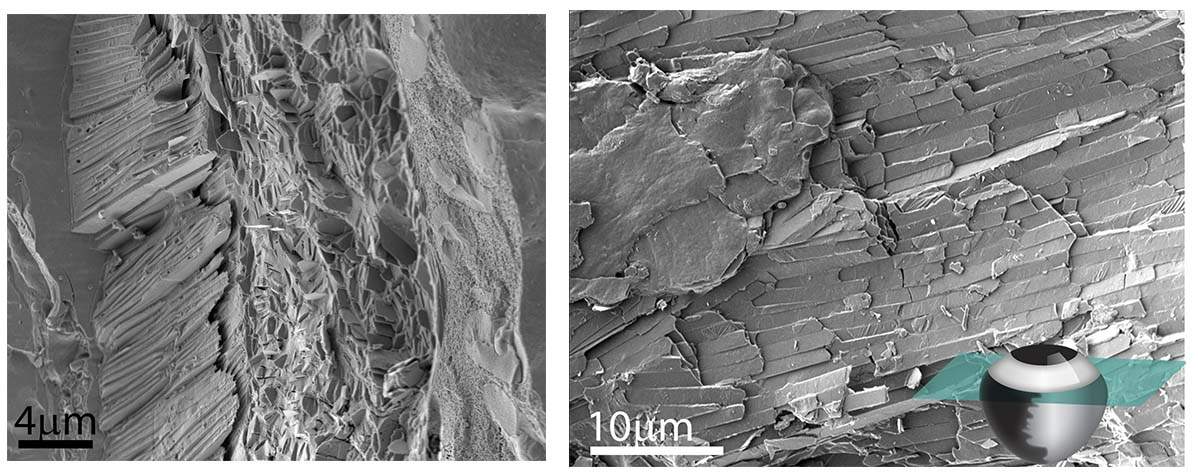Are you a journalist? Please sign up here for our press releases
Subscribe to our monthly newsletter:

Darwin confessed to being stumped by the evolution of such a precision instrument as the eye. But we know today that evolution has produced not just our eyes, but countless variations, many rivaling our own for sophistication. New research at the Weizmann Institute of Science demonstrates the remarkable precision and complexity that has evolved in the iris of a tiny fish known as a zebrafish. The findings of this research recently appeared in Advanced Science.
Dr. Dvir Gur explored the zebrafish eye during postdoctoral research that brought together two Institute scientists – Prof. Gil Levkowitz of the Molecular Cell Biology Department and Prof. Dan Oron of the Physics of Complex Systems Department. Levkowitz investigates the development of the zebrafish nervous system, Oron specializes in materials that absorb and reflect light. Together, they determined how the silvery outer layer of the fishes’ eyes are constructed and how this layer functions.
“Both our iris and that of the zebrafish block out all the light except for the rays that pass through the pupil to the lens and retina,” says Gur. “Our iris is made with the pigment melanin that absorbs light, while the fish iris reflects it – camouflaging, in the process, the eyes that protrude from its head. We wanted to understand how the iris performs both functions – blocking undesired light and camouflaging – at once.”

The research began using the Institute’s microCT, with the help of Dr. Vlad Brumfeld, which gave them an overall picture of the eye’s construction, and cryo-SEM – freezing fractions of the iris and observing them under the electron microscope.
They had expected to find a layer of crystals in the iris. These crystals are made of a material known as guanine that is found in all living cells, as it is also a component of DNA. Guanine in its crystalline form is transparent, but when thin plates of these crystals are arranged in layers, they reflect light – often producing silvery or shimmery colors. The fish have similar crystals in their skin and scales, and they are manufactured by special cells called iridophores.
Indeed, the researchers found that the outermost layer of the iris is composed of thin guanine crystals created by iridophores and laid like tiles across the surface. But they were surprised to discover another two layers: The middle layer is made of crystals that are highly disorganized, and a very thin inner layer contains melanin – that is, light-absorbing pigment like that in the human iris.
Understanding how the fish control the development of crystals in their eyes and skins could help us learn to control such diseases as gout and kidney stones
All of these layers prevent unfocused light from projecting onto the retina, so why would the eye have evolved to use all three? Computer simulations and optical measurements, done together with Omri Bar-Elli from Oron’s group, helped the scientists answer this question: The outer, organized layer reflects light mainly in the blue and green wavelengths. These, of course, are the main wavelengths of light underwater and they are the best for camouflaging the eye underneath. The second layer diffuses light and the third is a “rubber seal” that makes the inside of the iris “light-proof” against any wavelengths that make it through the other two.
Having looked at the zebrafish iris within the eye’s structure and on the scale of single crystals, the researchers wanted to observe it in a way that would give them high resolution as well as the larger scale. For this they went to Switzerland, to observe the iris structure in the European Synchrotron Radiation Facility (ESRF). Oron: “By focusing on the nanometer scale and scanning very quickly, you can get an amazingly high-resolution X-ray diffractions of the entire iris.” Together with Dr. Jan-David Nicholas of the University of Göttingen, Germany, the group analyzed terabytes of data from the scans, and they were again surprised by the results: The crystal “tiles” in the outer layer – long, thin hexagons – were laid as if by a master tiler, end to end, all positioned in precisely the same way. And the angle changed with the curvature of the eye, so that the entire iris looks silver, but still protects the edges of the eye and the area nearest the lens from sunlight coming from above.

Observing the way that the iris develops in these fish added further nuances to the question of nanoscrystals over pigment. The researchers found that the iris forms the ordered layer of crystals within just a few days of hatching, while the disordered layer forms later. Levkowitz points out that this makes sense for a tiny larva that must be able to make out predators and prey immediately, but its eye also undergoes exponential growth in a short period of time. The researcher’s simulations suggested that a thin layer of crystal can block out around three times as much light as a layer of melanin of similar thickness – useful for small eyes that need to develop visual acuity quickly.
Gur, who is now conducting further postdoctoral research at the Janelia Howard Hughes Medical Institute and the National Institutes of Health in the US, says that these findings may also have significance for humans. He is currently pursuing the idea that understanding how the fish control the development of crystals in their eyes and skins could help us learn to control such diseases as gout and kidney stones, in which crystals of a similar material (uric acid) are produced where we don’t want them. “Sometimes ancient solutions can open windows to new ones,” says Gur. “It took a structural chemist (Gur), a biologist, a physicist and a combination of widely different methods to arrive at the results of this study,” adds Levkowitz. “Without any one of them, we would not have been able to understand the evolution and development of this complex system.”
Prof. Gil Levkowitz's research is supported by the Richard F. Goodman Yale/Weizmann Exchange Program. Prof. Levkowitz is the incumbent of the Elias Sourasky Professorial Chair.
Prof. Dan Oron's research is supported by the Mary and Tom Beck - Canadian Center for Alternative Energy Research; the Crown Photonics Center; the Deloro Institute for Advanced Research in Space and Optics; the Wolfson Family Charitable Trust; Dana and Yossie Hollander; Centre National de la Recherche Scientifique; and the European Research Council.